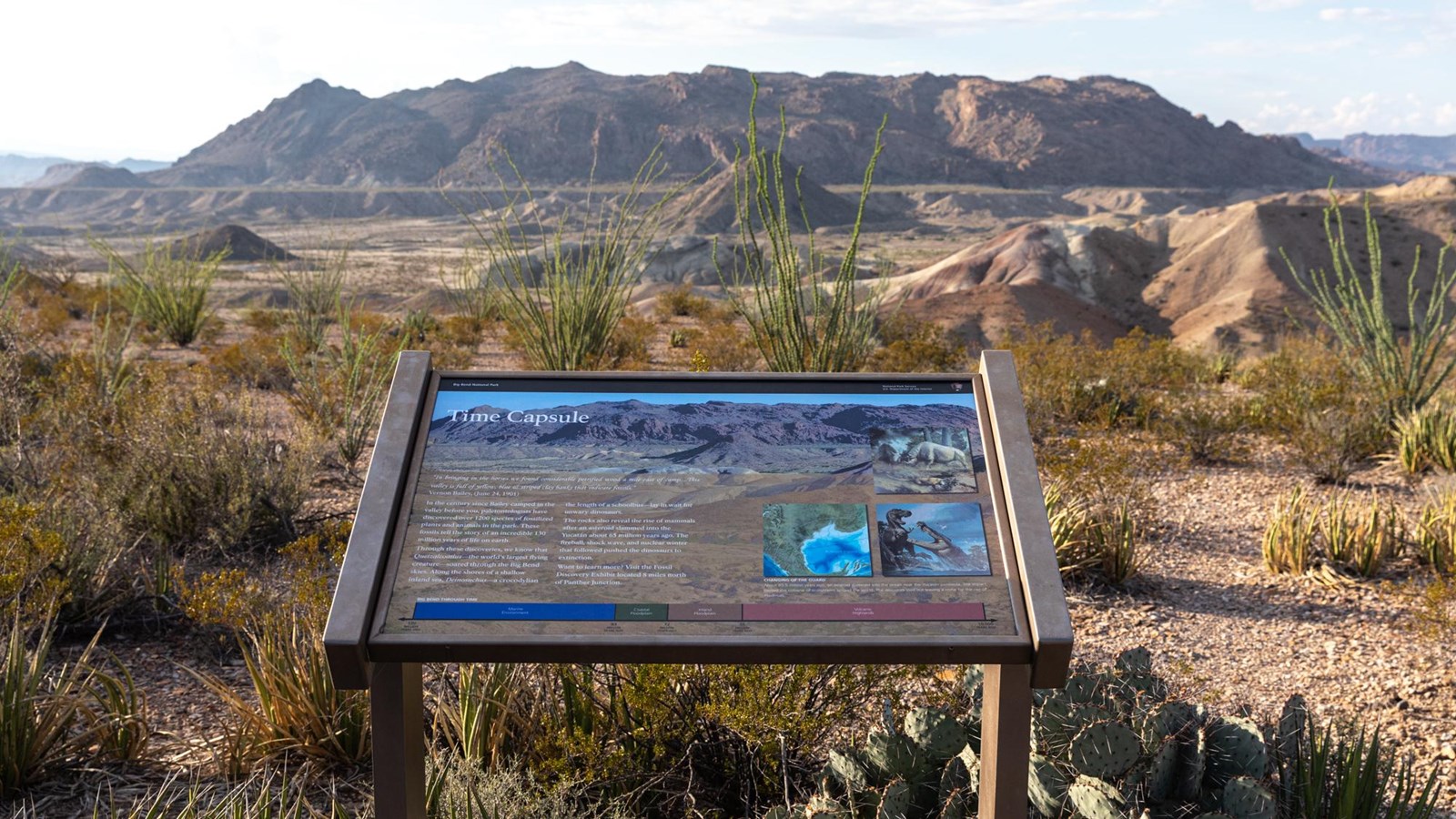Last updated: May 29, 2025
Place
Time Capsule Exhibit

NPS/CA Hoyt
Quick Facts
Location:
Big Bend National Park
Amenities
4 listed
Historical/Interpretive Information/Exhibits, Parking - Auto, Scenic View/Photo Spot, Wheelchair Accessible
The "badlands" in the far western reaches of the park showcase colorful hills that hide evidence of ancient life. Stop at this exhibit to learn more about some of the animal species that have been discovered in these hills.
The text on the exhibit reads:
"In bringing in the horses we found considerable petrified wood a miles east of camp. This valley is full of yellow, blue and striped banks that indicate fossils." Vernon Bailey, (June 24, 1901)
In the century since Bailey camped in the valley before you, paleontologists have discovered over 1200 species of fossilized plants and animals in the park. These fossils tell the story of an incredible 130 million years of life on Earth. Through these discoveries, we know that Quetzalcoatlus - the world's largest flying creature - soared through the Big Bend skies. Along the shores of a shallow inland sea, Deinosuchus - a crocodylian the length of a schoolbus - lay in wait for unwary dinosaurs. The rocks also reveal the rise of mammals after an asteroid slammed into the Yucatan about 65 million years ago. The fireball, shock wave, and nuclear winter that followed pushed the dinosaurs to extinction. Want to learn more? Visit the Fossil Discovery Exhibit located 8 miles north of Panther Junction.
The text on the exhibit reads:
"In bringing in the horses we found considerable petrified wood a miles east of camp. This valley is full of yellow, blue and striped banks that indicate fossils." Vernon Bailey, (June 24, 1901)
In the century since Bailey camped in the valley before you, paleontologists have discovered over 1200 species of fossilized plants and animals in the park. These fossils tell the story of an incredible 130 million years of life on Earth. Through these discoveries, we know that Quetzalcoatlus - the world's largest flying creature - soared through the Big Bend skies. Along the shores of a shallow inland sea, Deinosuchus - a crocodylian the length of a schoolbus - lay in wait for unwary dinosaurs. The rocks also reveal the rise of mammals after an asteroid slammed into the Yucatan about 65 million years ago. The fireball, shock wave, and nuclear winter that followed pushed the dinosaurs to extinction. Want to learn more? Visit the Fossil Discovery Exhibit located 8 miles north of Panther Junction.
